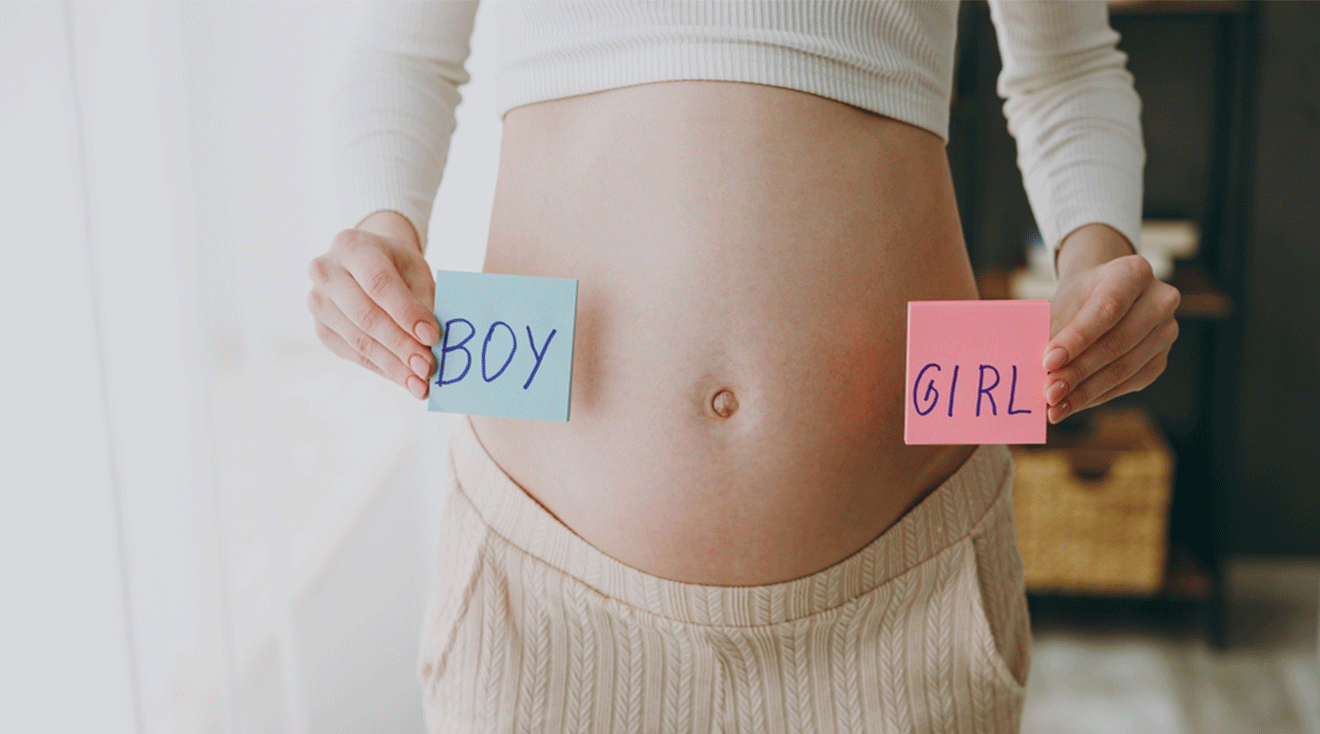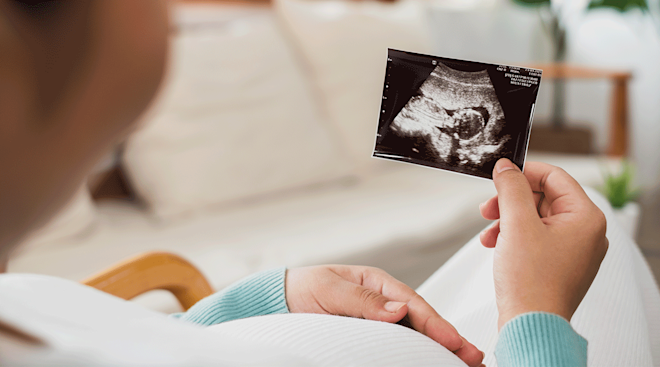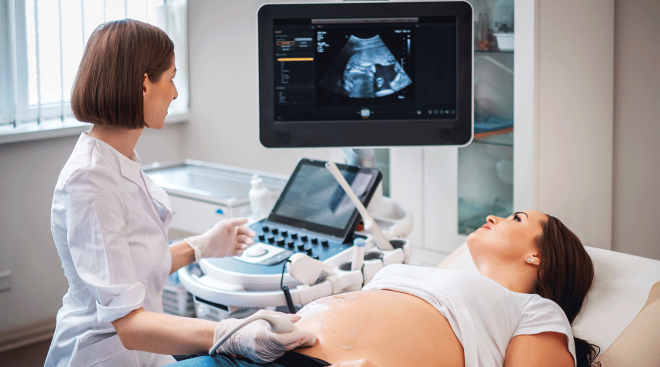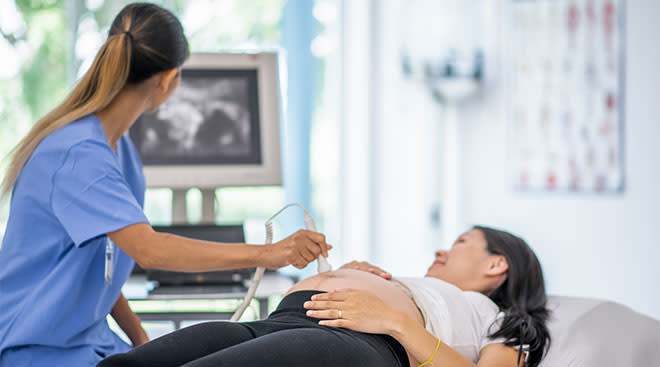Boy or Girl: What’s the Chance Baby’s Gender Test Is Wrong?
Second to your positive pregnancy test (yay!), discovering whether you’re having a boy or girl is, for many expectant parents, one of the most exciting moments of the nine+ month journey. And of course, when it comes to finding out baby’s sex you want accurate results. There are several different ways to learn baby’s sex, and the accuracy can vary depending on which method you use and when it’s conducted. Luckily, mistakes aren’t common. “That is a rare event,” says Jonathan Schaffir, MD, an ob-gyn at The Ohio State University Wexner Medical Center. Still, it can happen. So how accurate are blood tests for gender—along with ultrasounds and other methods? Here are the various tests that can determine baby’s sex, plus just how much you can trust them.
Non-invasive prenatal testing (NIPT) is an optional blood test you can do in your first trimester (anytime after week 10) that looks for chromosomal abnormalities in baby, like Down syndrome, trisomy 18 and trisomy 13. Also called cell-free DNA testing, the test analyzes a sample of the mom-to-be’s blood to look at fragments of fetal DNA that are released from the placenta into Mom’s bloodstream. While it’s not the primary purpose of the test, because it analyzes DNA, it can also determine your child’s sex. If it picks up a Y chromosome, you’re having a boy, Schaffir explains. If there is no Y chromosome detected, it’s a girl.
But can NIPT gender test be wrong? The chances of a sex determination via NIPT being wrong is around 1 percent when the test is conducted after week 10 of your pregnancy or later, Schaffir says. “Sometimes there isn’t enough fetal genetic material in the mother’s bloodstream to get an accurate reading, which could happen when blood is drawn too early in the pregnancy,” he says. But when conducted at the right time, NIPT is very rarely wrong, at about 99 percent accurate.
You may have several ultrasounds over the course of the first 20 weeks of pregnancy. But it’s at your mid-pregnancy ultrasound (usually done around week 20) that medical providers think an ultrasound technician is generally able to see baby’s genitals and can let you know if you’re having a boy or girl.
The chances of having the gender wrong on ultrasound are up to 5 percent, says Schaffir. An ultrasound can be between 95 to 99 percent accurate in determining sex, depending on when it’s done, how skilled the sonographer is and whether baby is in a position that shows the area between their legs. Mistakes can also be made. “Sometimes a loop of umbilical cord protruding in that area may be mistaken for a penis,” Schaffir points out.
In general, the mid-pregnancy ultrasound is most accurate when done between 18 and 22 weeks of pregnancy, says Patricia A. Evans, NP, CNM, lead certified nurse midwife at MemorialCare Medical Group in Fountain Valley, California.
It’s also possible to determine baby’s sex through more invasive tests like chorionic villus sampling (CVS) and amniocentesis, which take a direct sample of baby’s genetic material. Doctors use these tests to diagnose potential chromosomal abnormalities (like Down syndrome) and genetic problems (like cystic fibrosis), often after preliminary results from NIPT or a multiple marker screening call for a more precise assessment. Because there’s a very small chance of miscarriage with CVS and amnio, it’s not recommended that you undergo these tests if they’re not needed. They’re “risky procedures and aren’t done for sex determination only,” Evans says.
If your doctor recommends undergoing CVS or amniocentesis and you decide to proceed, both are thought to be very reliable for determining sex. “Since it’s obtaining a sample of the genetic material directly from placental tissue, it’s extremely accurate,” Schaffir says. The only reason these tests might have an inaccurate reading is through mislabeling the specimen or a rare disorder, he says.
All in all, if you decide to find out if you’re having a girl or boy using prenatal testing or ultrasound mid-pregnancy, the odds are very good that the result is accurate. Sex determination mix-ups “happen rarely with today’s technology,” reassures Evans.
Please note: The Bump and the materials and information it contains are not intended to, and do not constitute, medical or other health advice or diagnosis and should not be used as such. You should always consult with a qualified physician or health professional about your specific circumstances.
Plus, more from The Bump:
Patricia Evans, NP, CNM, is a nurse practitioner and certified nurse midwife at MemorialCare Orange Coast Medical Center in Fountain Valley, California, with more than 20 years of experience. She earned her nursing degree from Saddleback College and became certified in midwifery at San José State University.
Jonathan Schaffir, MD, is an ob-gyn at The Ohio State University Wexner Medical Center and a past president of the North American Society for Psychosocial Obstetrics and Gynecology. He earned his medical degree from Brown University in 1990.
Learn how we ensure the accuracy of our content through our editorial and medical review process.
Navigate forward to interact with the calendar and select a date. Press the question mark key to get the keyboard shortcuts for changing dates.




















































